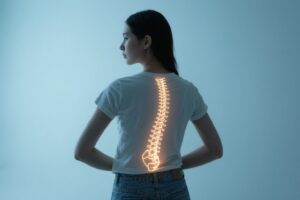
Stretching is often the first thing people turn to when they experience back pain. It’s simple, feels good, and is frequently recommended as part of general advice for pain relief. While stretching has clear benefits, such as improving flexibility and reducing muscle tension, it’s rarely enough on its own to resolve the underlying causes of chronic back pain.
If you’ve been stretching consistently but still struggle with discomfort, it might be time to have a closer look at what’s really going on with your spine and what your back truly needs to heal.
Stretching works by lengthening tight muscles and temporarily improving blood flow to affected areas. This can provide short-term relief, especially for those who sit for long periods or have muscle imbalances. However, this relief is typically surface-level and doesn’t address spinal misalignments, disc compression, or deep muscular weaknesses that often lie at the root of persistent back pain.
Without tackling the actual structural and mechanical issues in the spine, the benefits of stretching are limited, and the pain often returns.
One of the most overlooked causes of chronic back pain is spinal misalignment. When the vertebrae of your spine are not properly aligned, it can place uneven pressure on the discs and nerves, leading to inflammation, pain, and restricted movement. Stretching muscles doesn’t realign the spine or correct postural imbalances. For that, more targeted treatment is needed, such as spinal decompression or corrective therapy.
Muscle weakness, especially in the core and deep spinal stabilisers is a common cause of back pain. If your spine isn’t well-supported by the surrounding muscles, it becomes more vulnerable to strain and injury. Stretching alone doesn’t strengthen these muscles, it may even worsen instability if done excessively without balance from strengthening exercises.
To truly support your spine, a combination of stretching and strengthening, particularly of the core, glutes, and lower back is essential.
Another reason stretching falls short is that it doesn’t adequately decompress the spine. If your back pain is related to conditions like a herniated disc, sciatica, or L5-S1 compression, simply loosening tight muscles won’t remove the pressure from spinal discs and nerves. This is where tools like the Spinal Backrack can be particularly effective. Designed by orthopaedic specialists, the Backrack uses natural spinal decompression to restore proper vertebral spacing and relieve pressure from the spine, something stretching alone cannot achieve.
Poor posture is a root cause of many back issues. If you continue to sit or stand in ways that place stress on the spine, stretching won’t undo the damage. In fact, it may mask symptoms temporarily and delay proper intervention. Correcting posture, using ergonomic support, and learning proper movement mechanics are key parts of any comprehensive back care plan.
To effectively address chronic back pain, a more holistic and multistep approach is needed. This may include:
Targeted spinal decompression (e.g. with a Backrack)
Posture correction and ergonomic support
Strength training for core and back muscles
Mobility work to improve range of motion
Stretching to relieve muscle tightness
Professional guidance from a physiotherapist or spine specialist
Stretching should be one part of a complete routine, not the entire solution.
While stretching can provide short-term relief, it is rarely enough to treat chronic back pain on its own. True recovery requires a deeper look into spinal health, muscular balance, and the biomechanical causes of pain. By combining stretching with spinal decompression, strength training, and posture correction, you can begin to address the true source of discomfort and build long-term back health. If you’re looking for a safe, natural way to decompress your spine at home, consider using the Spinal Backrack, a medically backed tool that targets the root cause of back pain and supports your spine’s natural structure.






Sign up our newsletter to get article update about backrack therapy.